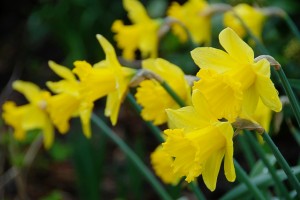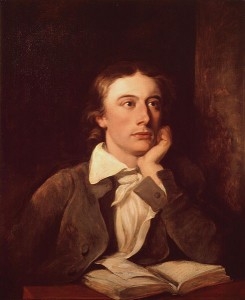Romanticism
By: James Bott
Overview
The Romantic period arose after a political uproar from the events that followed the French Revolution. It was a reaction against the methods and principles of the theories behind the Enlightenment. The Enlightenment presented very logical and consistent ideas, however, the romantics wanted no part in those ideas. Romanticism was a contradiction to the Enlightenment. It is a loose collection of scattered characteristics. The movement had no organizational identity. Romantics encompassed the abstract and the abundance as well as the individual. Many Romantic ideas share an importance of intensity, mystery, and wisdom, all protected by the individual’s thoughts (Micale.)
William Wordsworth

by Tony Hammond, used under

Romanticism is also known as the “Age of Wordsworth” because of his influence during this period. Wordsworth was one of five children in his family. With the death of his mother at the age of eight and his father a couple of years later, everything seemed to change. He grew independent quickly and attended St. John’s College, in Cambridge. He vacationed in France one year after the French Revolution and was troubled by the politics there. He met up with his sister, Dorothy, and he met a new friend, the poet and journalist Samuel Taylor Coleridge. Coleridge was very inspirational towards Wordsworth’s work giving him a fresh outlook. Soon after the three of them released the Lyrical Ballads. The volume was published anonymously but is considered today as a breakthrough for Romanticism (Woleson.)
Writing Style
- Felt the world was “too much with us”
- Wanted to reunite readers with true feelings and emotions.
- Feel the flowers and feel the breeze against your skin
-“The best portion of a good man’s life: his little,
nameless unremembered acts of kindness and love.”
-“Poetry is the spontaneous overflow of powerful feelings:
it takes its origin from emotion recollected in tranquility.”
-“Poetry is the breath and finer spirit of knowledge”
-Lyrical Ballads
John Keats
Keats was a British poet who grew up in a lower-middle class family in London. His father died during in accident when he was nine and his mother died when he was fifteen of tuberculosis. He left school when he was sixteen and moved to Edmonton to become a surgeon. Four years past and Keats was registered at Guy’s Hospital to pursue his studies of medicine. However, he became very interested in poetry. He continued to study but during this time he wrote marvelous letters to his friends. The letters were later published. Keats dropped out of school and went to live with his brother. He took care of him until he too past away from tuberculosis. Keats then moved to the Wentworth place owned by his friend Charles Brown. He wrote five of six great odes while living there, one of which his most popular Ode to a Nightingale. Keats died at the young age of 25 with the disease that haunted his family, tuberculosis (Gale.)

by William Hilton, used under

Writing Style
- Rich and vivid
- Sensual Imagery
- Controlled poetic style
“My sense, as though of hemlock I had drunk,
Or emptied some dull opiate to the drains
One minute past, and Lethe-wards had sunk:
But being too happy in thine happiness,—
That thou, light-winged Dryad of the trees,
In some melodious plot Of beechen green,
and shadows numberless,
Singest of summer in full-throated ease.”
-First Stanza of “Ode to a Nightingale”
Jane Campion directed a film based on John Keats life. Here is the trailer of Bright Star.
John Keats. (1998). In Encyclopedia of World Biography. Detroit: Gale. Retrieved fromhttp://ic.galegroup.com/ic/whic/ReferenceDetailsPage/ReferenceDetailsWind Web. 15 Apr. 2014.
MICALE, M. S. (2006). Romanticism. In J. Merriman & J. Winter (Eds.), Europe 1789-1914: Encyclopedia of the Age of Industry and Empire (Vol. 4, pp. 2026-2033). Detroit: Charles Scribner’s Sons. Retrieved from http://ic.galegroup.com/ic/whic/ReferenceDetailsPage/ReferenceDetailsWind Web. 15 Apr. 2014.
WOLFSON, S. J. (2006). Wordsworth, William. In J. Merriman & J. Winter (Eds.), Europe 1789-1914: Encyclopedia of the Age of Industry and Empire (Vol. 5, pp. 2481-2483). Detroit: Charles Scribner’s Sons. Retrieved from http://ic.galegroup.com/ic/whic/PrimarySourcesDetailsPage/PrimarySources 15 Apr. 2014.